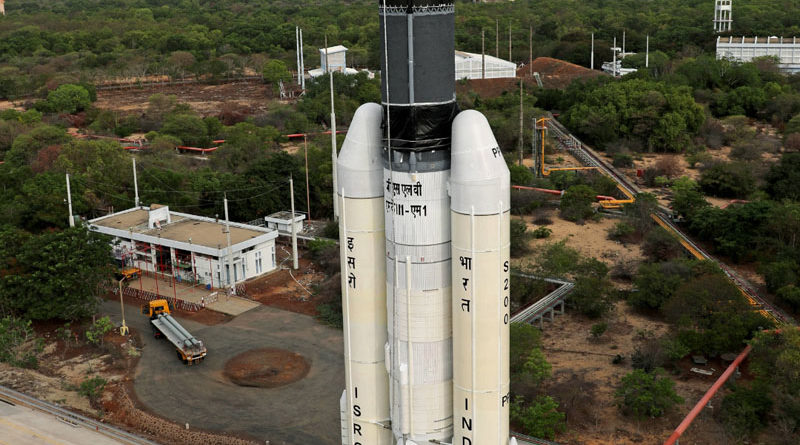Chandrayaan 2 Lifts Off; “Bounced Back With Flying Colours,” Says ISRO
Chandrayaan 2 moon mission launch: ISRO Chairman K Sivan said, “It is the beginning of a historical journey for India
New Delhi: July 23, 2019
India‘s moon mission Chandrayaan 2 lifted off at 2:43 pm on Monday from Andhra Pradesh’s Sriharikota
- Chandrayaan 2, India’s mission to the Moon, was launched on Monday
- India set to be only the fourth country to complete a lunar soft landing
- ISRO chairman called this the agency’s “most complex mission ever”
India’s moon mission Chandrayaan 2 lifted off from its launch pad at Andhra Pradesh’s Sriharikota at 2:43 pm on Monday on board a giant heavy-lift rocket. India’s space scientists had a narrow one-minute window for their second attempt at launching the moon mission, a week after the mission was aborted 56 minutes before lift-off.
In visuals, scientists at the Indian Space Research Organisation’s control room closely watched the rocket as it gained speed and headed towards the outer atmosphere, propelled by the massive thrust from the powerful 640-tonne rocket.
Minutes later, the rocket successfully put Chandrayaan 2 into Earth’s orbit – and a booming applause reverberated inside the control room as the scientists who have been working hard for the mission congratulated one another, hugged and shook hands.
“I am extremely happy to announce that GSLV Mark 3 successfully injected the Chandrayaan 2 into orbit… It is the beginning of a historical journey for India… We fixed a serious technical snag and ISRO bounced back with flying colours,” ISRO Chairman K Sivan said, drawing loud applause from the scientists gathered around him at the control centre.
The GSLV Mark 3 – ISRO’s largest and most powerful rocket – is 44 metres long or as tall as a 15-storey building. The 20-hour countdown for the launch of the Rs. 1,000-crore mission began Sunday evening at 6.43 pm.
The rocket propelled into space an orbiter, a lander ‘Vikram’ (named after ISRO founder and eminent Indian scientist Vikram Sarabhai) and a moon rover ‘Pragyaan’. Once the Vikram lander separates, it will head to a region on the moon that is little explored till date – most lunar landings have taken place in the northern hemisphere or in the equatorial region.
A mission by China landed in the northernmost part, followed by Russia’s Luna missions. Most of the American lunar landings, including Apollo missions, were in the Moon’s equatorial region.
The success of Chandrayaan 2 mission will make India the fourth country after the US, Russia and China to pull off a soft landing on the moon.
Courtesy: NDTV

